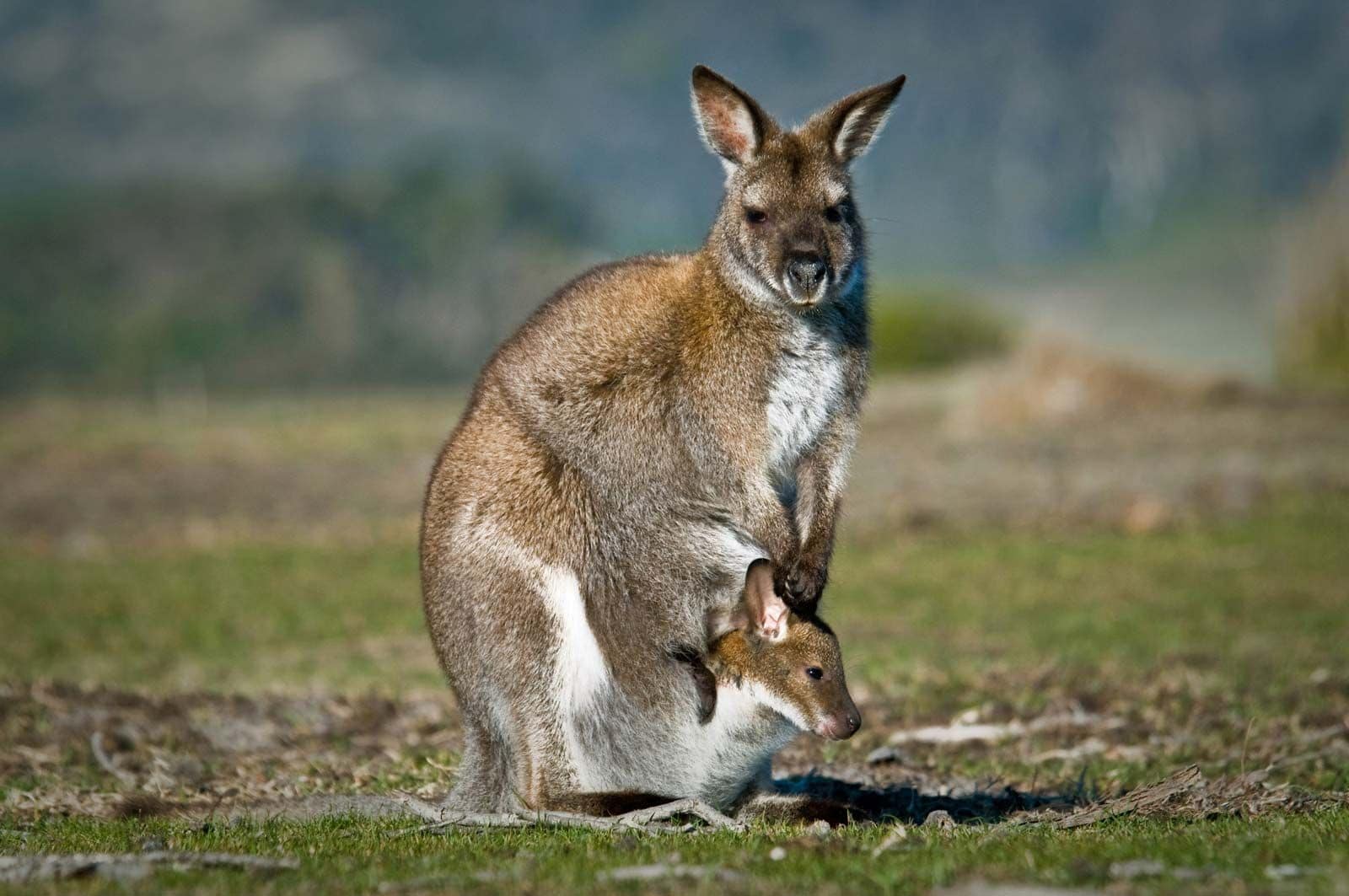Embark on an Aussie Wildlife Adventure: A Parent’s Guide to Australian Animals
G’day, moms and dads! Are you ready to take your little joeys on a thrilling journey through the land of Oz to discover some of the most unique creatures on the planet? Australia, known for its diverse ecosystems, is home to a myriad of fascinating wildlife that you won’t find hopping, crawling, or swimming anywhere else in the world. From the cuddly koala to the spiky echidna, Australia has an animal for every pair of curious eyes. So grab your virtual binoculars as we dive into a pouch full of fun facts and family-friendly tips about Australian animals!
Why Australia’s Wildlife Is Unique
Australia boasts an incredibly rich tapestry of biodiversity. But ever wondered why? Thanks to millions of years of geographic isolation, Australia serves as a haven for some of the most distinctive animals around. Many of these species, like kangaroos and wallabies, are marsupials, which means they carry their young in pouches. And that’s just the start of what makes Australian animals so special!
Meet the Iconic Aussie Animals
When most people think of Australian wildlife, a few famous faces jump to mind. Let’s meet these iconic animals and learn what makes them so remarkable.
- Kangaroos: With their powerful hind legs and distinctive hopping, kangaroos are the poster children of Australian wildlife. They come in various sizes, from the towering red kangaroo to the petite musky rat-kangaroo. Did you know that kangaroos can leap up to three times their body length in a single bound?
- Koalas: Adorable and sleepy, koalas spend much of their time napping in eucalyptus trees. They feed exclusively on eucalyptus leaves, which are toxic to most other animals! Koalas also have fingerprints that are almost indistinguishable from humans’!
- Wombats: These chubby burrowers are like nature’s bulldozers. Wombats dig extensive underground networks with their strong legs and rodent-like incisors. Fun fact: they produce cube-shaped poop!
- Platypus: The platypus is one of the only egg-laying mammals, known as a monotreme. This elusive creature has a bill like a duck, webbed feet, and a beaver-like tail. It’s also one of the few venomous mammals; the male has a spur on its hind foot that can deliver a painful injection of venom.
- Emus: As the second-largest bird in the world, emus are flightless giants that can reach up to 6 feet in height. They have powerful legs designed for long-distance running and can sprint at speeds of 30 mph!
But wait, there’s more! Australia’s animal kingdom extends far beyond these well-known stars. With a landscape that ranges from tropical rainforests to arid deserts, it’s no surprise that Down Under is home to an array of species, each adapted to their unique habitats.
Tips for Teaching Kids About Australian Animals
Educating your kids about wildlife is not only fun but also instills a sense of respect and conservation for nature. Here are some tips to make learning about Australian animals an engaging experience:
- Interactive Learning: Kids love hands-on activities. Create an Australian wildlife-themed board game or craft session to help them remember different species and facts.
- Virtual Zoo Tours: Take advantage of online resources. Many Australian zoos offer virtual tours where you can see these animals in real-time from your living room!
- Documentaries and Books: A wealth of documentaries and children’s books are available to introduce your family to the wonders of Australian fauna. Storytime can be a learning adventure with books about the outback!
- Wildlife Sanctuaries: If you’re lucky enough to visit Australia, plan a trip to a wildlife sanctuary. This not only supports conservation efforts but gives your family the chance to see these animals up close in their natural environment.
Embarking on an Australian animal exploration from the comfort of your home can be a delightful and educational experience for the entire family. Stay tuned as we continue to uncover the secrets of Australia’s amazing creatures and offer more tips on sharing these wonders with your children. Remember, every bit of knowledge helps protect the future for these unique animals!

5 Things Parents Should Know in Preparing for an Australian Animal Adventure
Before you and your family embark on this wild journey, there are some important things to keep in mind. Here’s a handy checklist to ensure you’re all set for an unforgettable Australian animal experience, whether at home or in the Land Down Under:
-
Research the Wildlife
Understanding the animals you might encounter is key. Dive into fun family research sessions and discover which animals are native to different parts of Australia. This will not only educate but also build excitement for your upcoming adventure!
-
Respect the Habitat
Whether visiting a zoo, sanctuary, or the wild, it’s crucial to teach children to respect the natural habitats of animals. Explain why it’s important not to feed, touch, or disturb the wildlife and to always follow the rules set by wildlife parks or guides.
-
Safety First
Australia’s bushland and waters are stunning, but they can also be home to creatures like snakes and jellyfish. Learn about the environment’s potential hazards and how to stay safe while exploring, including what to do in case of an encounter with a less-than-friendly critter.
-
Plan and Equip
Outdoor adventures require proper preparation. If planning a visit, equip your family with essentials like sun protection, appropriate clothing, and plenty of water. Don’t forget a first-aid kit for those little scrapes and bites that can happen when exploring the great outdoors.
-
Think Like a Conservationist
Instill a love and responsibility for the environment in your kids by teaching them about conservation. Engage with programs that support wildlife conservation, and consider “adopting” an animal through a zoo or sanctuary to support their efforts from afar.
With these tips in mind, your family is all set to have a wild and wonderful time learning about the unique animals of Australia. So, keep your eyes peeled for the next furry, scaly, or feathery friend you might uncover on your Aussie animal adventure. Remember, fostering a love for nature in your kids can inspire a lifetime of wonder and responsible stewardship for our planet’s precious wildlife!
From Marsupials to Reptiles: The Diversity of Australian Wildlife
As you dig a little deeper, you’ll discover a world brimming with creatures of all shapes and sizes. For instance, the quokka, often dubbed “the world’s happiest animal,” with its friendly demeanor and camera-ready smile. Then there’s the Tasmanian devil, known for its ferocious appetite and powerful jaws. Let’s not overlook the many species of dazzling reptiles, from the massive saltwater crocodile to the multicolored blue-tongue lizard.
Diversity is the spice of life, and Australia’s ecosystems are as varied as the animals that inhabit them. Studying these environments helps kids understand the delicate balance of nature’s web and the importance of preserving it for creatures great and small.
Understanding Australia’s rich animal kingdom and sharing it with your children makes for an exceptional educational journey. As parents, you have the opportunity to open their eyes to the wonders of the world, laying the groundwork for a lifelong love of animals and the natural environment.
So, let’s hop like a kangaroo, climb like a koala, and burrow like a wombat, as we embark on a virtual journey to the heart of Australia’s enchanting wildlife. The adventure is just beginning, and there’s so much more to learn and explore. Get ready for a ‘g’day’ filled with animal encounters and stories that will captivate the hearts of your entire family!
For more great fun click here. For more information see here
Disclaimer
The articles available via our website provide general information only and we strongly urge readers to exercise caution and conduct their own thorough research and fact-checking. The information presented should not be taken as absolute truth, and, to the maximum extent permitted by law, we will not be held liable for any inaccuracies or errors in the content. It is essential for individuals to independently verify and validate the information before making any decisions or taking any actions based on the articles.




